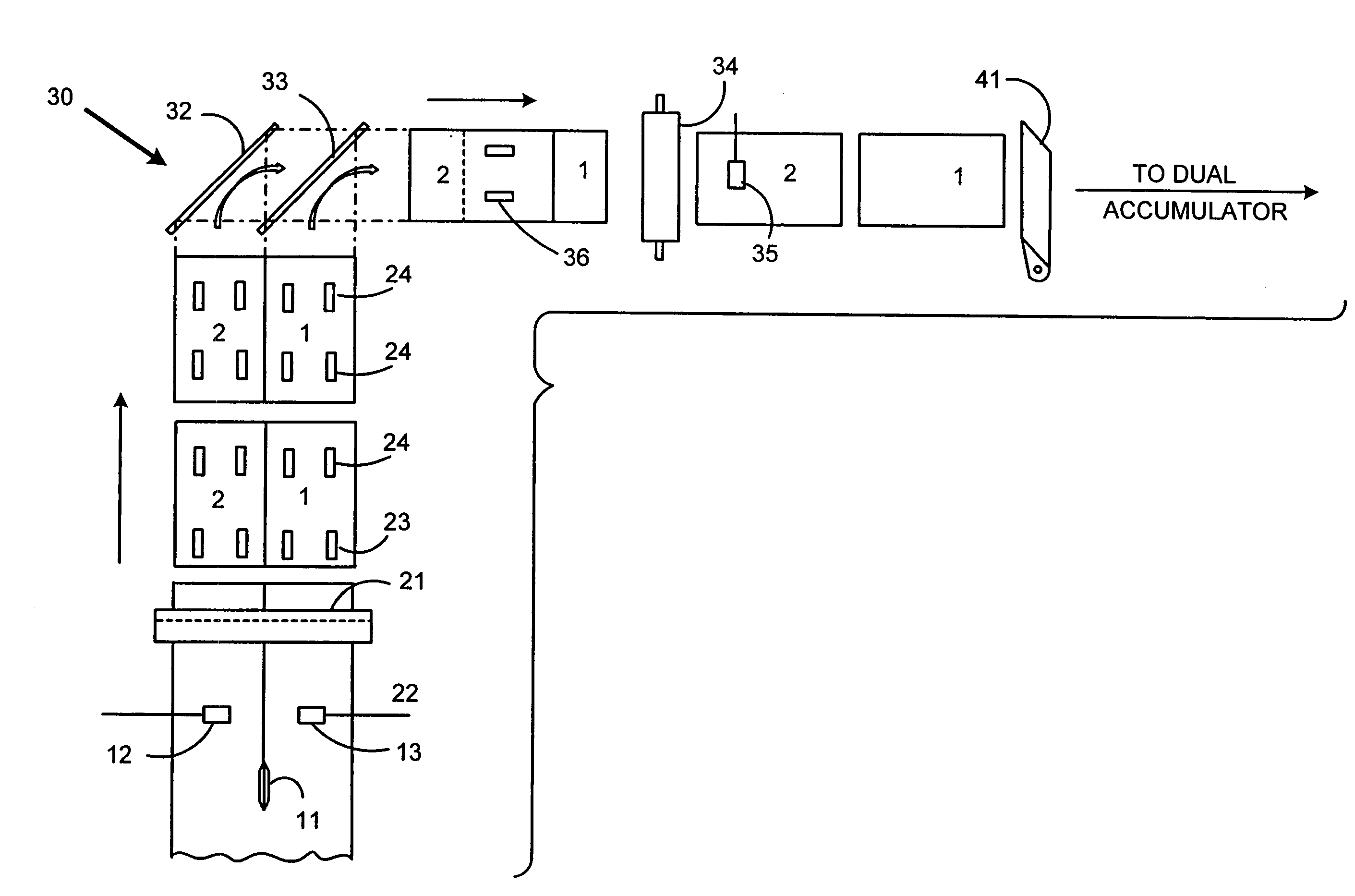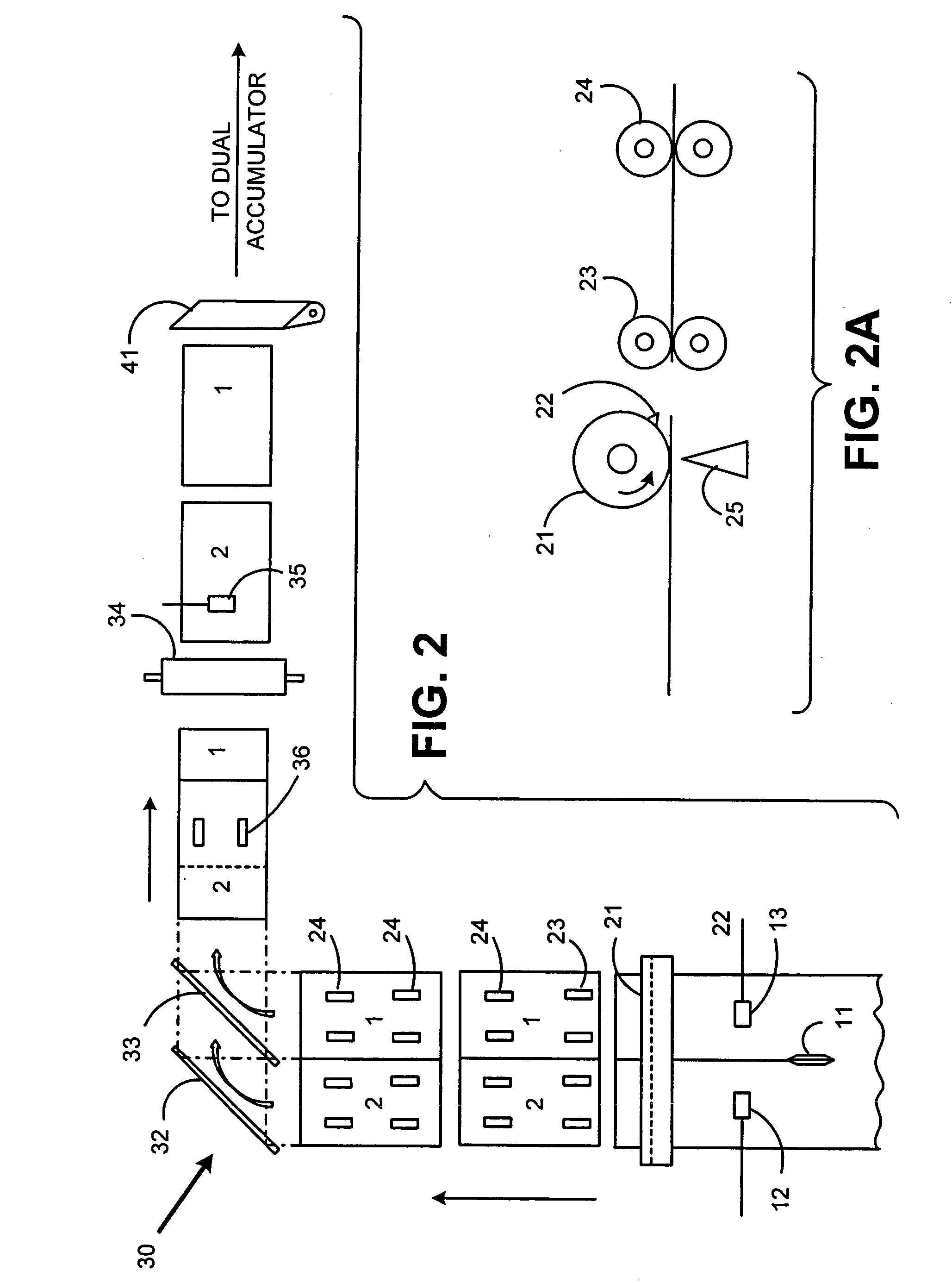System and method for providing sheets to an inserter system using a rotary cutter
a technology of inserter system and rotary cutter, which is applied in the field of inserter input system, can solve the problems of rotary cutter requiring a significant amount of time to decelerate, affecting the speed of rotary cutter, and affecting the efficiency of rotary cutter, so as to achieve the effect of small floor space and without significant lengthening of buffer modules
- Summary
- Abstract
- Description
- Claims
- Application Information
AI Technical Summary
Benefits of technology
Problems solved by technology
Method used
Image
Examples
Embodiment Construction
[0029] A preferred embodiment for implementing the present invention is depicted in FIG. 2. The components depicted in FIG. 2 may be associated with the general input stages depicted in FIG. 1, however it is not necessary that the particular components be part of any particular module, so long as they perform as described herein.
[0030] A web 100 is drawn into the inserter input subsystem. Methods for transporting the web are known and may include rollers, or tractors pulling on holes along a perforated strip at the edges of the web. The web 100 is split into two side-by-side portions by a cutting device 11. Cutting device 11 may be a stationary knife or a rotating cutting disc, or any other cutting device known in the art. While the embodiment in FIG. 2 shows the web being split into two portions, one skilled in the art will understand that a plurality of cutting devices 11 may be used to create more than two strands of web from the original one. Further, the processing steps descr...
PUM
| Property | Measurement | Unit |
|---|---|---|
| distance | aaaaa | aaaaa |
| width | aaaaa | aaaaa |
| constant transport velocity | aaaaa | aaaaa |
Abstract
Description
Claims
Application Information
 Login to View More
Login to View More - R&D
- Intellectual Property
- Life Sciences
- Materials
- Tech Scout
- Unparalleled Data Quality
- Higher Quality Content
- 60% Fewer Hallucinations
Browse by: Latest US Patents, China's latest patents, Technical Efficacy Thesaurus, Application Domain, Technology Topic, Popular Technical Reports.
© 2025 PatSnap. All rights reserved.Legal|Privacy policy|Modern Slavery Act Transparency Statement|Sitemap|About US| Contact US: help@patsnap.com



